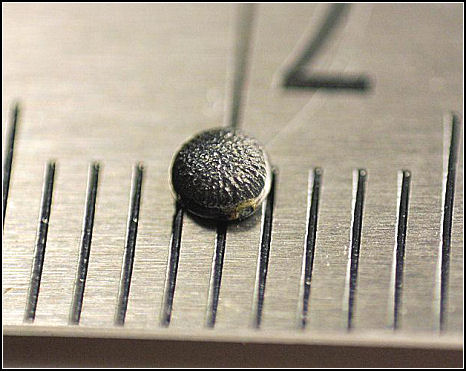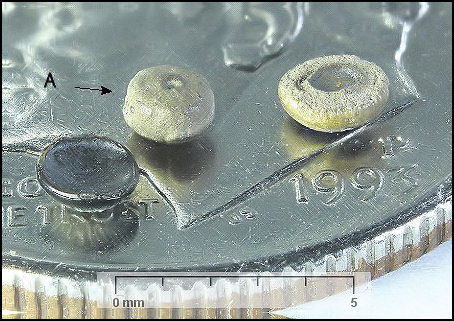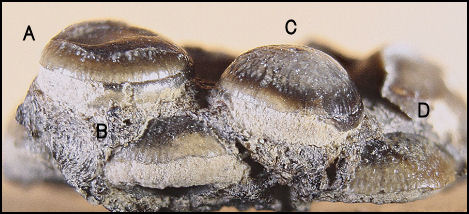|
The Bone Fish Paralbula casei is known almost solely from uncommon basibranchial and parasphenoid tooth plates and common isolated teeth. The bonefish uses these modified teeth to grind it's hard shelled prey such as mollusk and crustaceans. The isolated teeth of Paralbula casei are small, averaging only a few millimeters in diameter and requires the use of a fine mesh screen while collecting. The teeth are dome like, with an enamel surface that shows faint radiating lines or wrinkles emanating from the center. Typical of this genus is the alternating pattern of the replacement teeth.
The dome like teeth of Paralbula casei average
The distinctive lines or
wrinkles that emanate from
the center of the
P. casei tooth plate fragment.
Close up of same tooth plate as above.
Specimen and photo courtesy of Luke Oman
|





